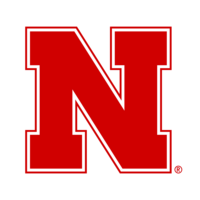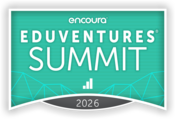The Eduventures annual Student Sentiment Research™ spotlights the institutions communicating most effectively with high school students. This year, the 2024–2025 incoming freshman class — the first true wave of Gen Alpha — joined the study.
Seventy-one percent already named a college whose outreach impressed them, surpassing the percentage of high school seniors who did the same (66%). As many institutions struggle to build awareness before senior year, one question emerges: Who’s already winning mindshare among ninth graders?
The Early School Gets the Attention
Gen Alpha has officially entered high school, and many have already begun looking into their college options. Of these college-bound Gen Alphas, 60% have explored a college website, 58% have read about colleges on a college planning site, and 87% said they have already received emails from colleges, according to the Eduventures research.
Some institutions are already forging connections with prospects through early web and email engagement. Whether these efforts lead to applications remains to be seen, but one thing is clear: Capturing Gen Alpha’s attention won’t get easier. As they approach application season, competition will intensify — and with fewer of them than Gen Z, the stakes are higher than ever.
So, which institutions are already on the minds of Gen Alpha? The 71% of high school ninth graders in our sample, who recalled a specific institution that had impressed them, listed a total of 278 schools. But some were mentioned more frequently than others. Below are the institutions topping the best communicator list for Gen Alpha.
Top Memorable Communicators Mentioned by Gen Alpha
- Baylor University
- Harvard University
- Auburn University
- Ball State University
- The Ohio State University
- The University of Alabama
- University of Nebraska - Lincoln
It’s no surprise that many top communicators are household names. This list reflects recall, not reputation or selectivity, and sometimes the “outreach” began with students themselves through websites or social media visits. But for these brands, even routine communication leaves a mark on the next generation.
Ball State University in Muncie, Indiana, is not like the others. Baylor University stood out primarily for its emails, which suggests targeted outreach efforts. This indicates that some institutions may be more intentional about their communications to Gen Alpha than others. What are they doing that’s working? Let’s take a closer look at some of these memorable communicators.

Ball State University
More than half of Gen Alpha respondents who mentioned Ball State said an email impressed them most. Email mentions surpassed social media mentions — proof that even for the youngest prospects, email still cuts through.
Students seemed flattered that the university showed interest in them but also that it did not pressure them to take the relationship any further, at least for now. Student comments include:
“It shows that they were interested in me.”
“I loved that it had pictures and did not feel like they were pressuring me to pick their college.”
“It was inviting, signed by a person instead of coming from a bot, and included opportunities to visit the college in person or online; though, I was too anxious to attend any of the opportunities sadly.”

Baylor University
Baylor University, already a national brand, successfully connected with Gen Alpha through well-timed, personalized emails and a tangible campus feel — supported by occasional print mail. Even small touches, like stickers — mentioned by several students — reinforced a friendly, authentic brand voice that resonates early.
Student comments include:
“I felt as if they were being truthful, and I also got some stickers from the college in the mail.”
“They just talked a lot about the culture of the school (But I'm not sure if I'm willing to travel that far).”
“It was very well worded, and it felt personal.”

The University of Nebraska - Lincoln
The University of Nebraska (Nebraska) stood out with a mix of print and email. Students liked that the information was easy to digest and relevant to them — showing that Nebraska already understands the unwritten rules of communicating with this rising generation. As one student pointed out, Nebraska also actively inquired about its prospects’ interests.
Student comments include:
“(I loved) That they reached out and asked me about what I would want for college.”
“I loved how much information was provided and how presentable and easy it was to read.”
“It’s really informative.”
The Bottom Line
It’s no surprise that most top communicators identified by Gen Alpha are large research universities with deeper marketing budgets. Many institutions may hesitate to use more limited resources to engage students this young, unsure if the effort will translate into enrollment. But in an increasingly competitive environment, many can’t afford not to take this risk, either. Early contact, especially when genuine and personalized, can leave a lasting impression long before application season.
Early outreach at this phase works precisely because few institutions do it. Once everyone does, the signal will get lost in the noise. Now is the time to build awareness and affinity before the competition catches up.
Even without major budgets, institutions can build Gen Alpha equity by:
- Delivering on their brand promise: Strong student outcomes fuel authentic word-of-mouth.
- Refreshing digital channels: Make key information easy to find and engage with for younger audiences.
- Activating community connections: Use athletic events, campus clubs, and youth programming to make their brand tangible locally.

Personalized, Data-Driven Marketing Engagement Solutions
Take your prospective student and family marketing to the next level with strategic campaigns driven by best practices and research that drive engagement through each stage of the funnel.

